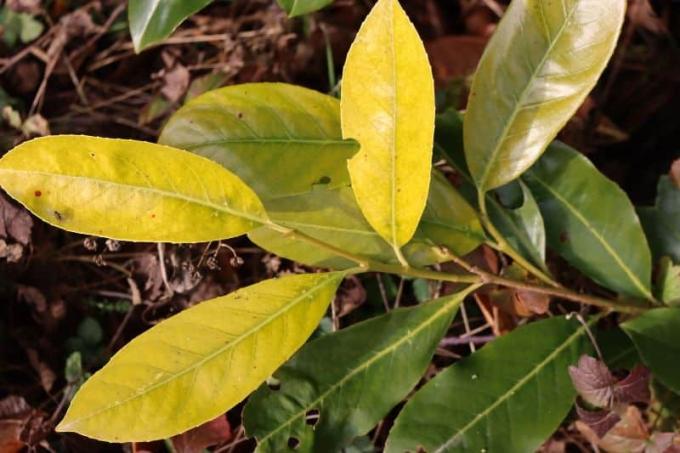

Table of contents
- Suitable as a balcony or terrace plant
- Jasmine has a long flowering period
- Warm hibernation ensures many flowers
- Sensitive yet robust
- The plant does not tolerate waterlogging
- Few things lead to success
- Worth knowing about Arabian jasmine in brief
The Arabian jasmine is already distinguished by its leaves, which are not pinnate like normal jasmine. Rather, these are rounded and entire. But what is particularly special is its strong, intense scent and that of the Jasmine sambac can also be used as a climbing plant. All you have to do is tie it up.
Suitable as a balcony or terrace plant
Since the Arabian jasmine does not tolerate frost, it should not spend the winter outdoors. Therefore, keeping them in pots is also well suited. In a conservatory, this can also be used as a ground cover, since it can grow in bushes, but hardly ever climbs itself. The white six or seven-petalled flowers are fragrant and pamper the senses. The jasmine does not make great demands on the soil, because simple potting soil with a little expanded clay can be used here for potted plants. It also does not have to be watered all the time, which also depends on the location. This also depends on the location, because the plant must not dry out.
Jasmine has a long flowering period
The flowering time is from early summer to late autumn, when the first frost can already occur. This is also the time when the Arabian jasmine is no longer allowed to stand outdoors for the winter. It can also be cut back for this purpose. This does not have to be in a heated room, but it must not get frost. A dark room is best, so the plant can recover best. In the spring, it must then slowly be accustomed to the sun again, and it does not have to go directly to its final location. Of course, if it is already clear where this should be, the shoots can already be tied up there.
Warm hibernation ensures many flowers
Sambac jasmine can hibernate cold and dark, but if it is in a warm and bright place, it can develop more flowers the next year. The plant only has to be watered as needed over the winter. If it is cool and dark, less watering is required than if it is bright and warm. Neither is fertilized in the cold season. After flowering, it can also be cut back, which then leads to a larger flower. The Jasminum sambac then continues to grow like a bush. If you want, you can also cut back vigorously, but this should only be done as needed.
Sensitive yet robust
On the one hand, the Jasminum sambac is sensitive to water and frost, but there is hardly any risk of illness. Only if too much is poured can the root rot. This of course leads to the death of the plant. Otherwise, even beginners can't really do much wrong, because the Jasminum sambac almost always blooms. Of course, this also depends on whether it is regularly supplied with water and fertilizer. During the flowering period, this jasmine has an increased need for fertilizer and therefore this should be done once a week. A long-term fertilizer or complete fertilizer is suitable for this. Dank is a plant with beautiful and strongly scented flowers. And not just in summer, but right into late autumn.
The plant does not tolerate waterlogging
Since the Jasminum sambac does not tolerate waterlogging, the soil must also be well drained. To be on the safe side, drainage can also be placed in the pots. This keeps the roots moist but not wet, as this would cause the plant to rot. Therefore, the need for water always depends on the location. Of course, if it is in the sun, more water has to be poured. Otherwise only moderately, because drought means that the Arabian jasmine does not develop any flowers. Since the scent of the flowers is so intense, they are also used to make perfumes. Above all, however, the lush green of the leaves and the white flowers make the Jasminum sambac a real feast for the eyes. Especially since this plant beautifies every balcony or terrace in pots or flowers. Because not everyone has a winter garden, where this then sets an accent as a ground cover. Little things to keep in mind:
- permeable soil to allow water to drain
- flowers from early summer to late autumn
- bring in before the frost
- can hibernate both cool and warm
- Cut back after flowering for more flowers
- hardly climbs, but can be tied up
- fertilize once a week in summer
- Water only as needed and location
If you pay attention to these things, you will enjoy your Arabian jasmine for more than a year, because this is a perennial plant. This is still relatively undemanding, which is popular with people with little time. Without much effort, you can then enjoy the flowers and the scent all summer long. Even during the winter, this is not really demanding, since the jasmine can also overwinter in the living room. This is good for people who have very little space because not everyone has a suitable stairwell or basement at their disposal.
Few things lead to success
This means that the plant can also be placed outside in the sun or in the shade. This is only noticeable in the water requirement, which then has to be taken into account. The only effort is that it has to be fertilized once a week. However, only during the flowering period, after which the plant simply rests. So you can expect plenty of flowering again after the winter. Especially if the Jasminum sambac has been pruned well. This makes the plant also suitable for people who are not really that successful with plants. Easily get a nice balcony or conservatory without too much work.
Worth knowing about Arabian jasmine in brief
- Sambac jasmine differs from other types of jasmine in its leaves. There are no pinnate leaves, but rounded with entire margins.
- Jasminum sambac is an upright or climbing evergreen shrub.
- The strong scent of the flowers is particularly striking.
- In contrast to other types of jasmine, the Arabian jasmine does not grow as quickly.
- It is good as an underplant and ground cover in the winter garden, but is also suitable as a pot plant on the balcony and terrace.
- The flowers appear in early summer, then the shrub blooms until late autumn, at the time of the first frosts.
- A scaffold is useful as a support on which the shoots can be tied up.
- Jasminum sambac is used to make perfumes. It is also used to flavor tea.
- This jasmine is even used in aromatherapy.
Location
In summer you can put the Arabian jasmine in the open air. He should be slowly acclimated to the sun. The closer it is to one of your favorite spots, the more of the beguiling scent you get. In winter, the conservatory is an ideal place to stay. However, the plant can also hibernate in a cool place, it should only be frost-free.
plant substrate
A permeable, humus-rich soil with a loamy or loamy soil is ideal. sound addition. You can use normal potting soil and add some expanded clay. The main thing is that the excess irrigation water can drain off easily. Drainage at the bottom of the pot is recommended for the same reason.
watering and fertilizing
Jasmine sambac copes well with drought. However, he indicates this by hanging down his shoots and leaves. After watering, however, they straighten up again. When it is hot and in the sun it needs to be watered plentifully, otherwise only mediocre. It is fertilized regularly. This stimulates flowering. Fertilize once a week with a complete mineral fertilizer or a corresponding long-term fertilizer.
wintering
Frost kills all parts of the plant above ground. If the root ball is well protected and the soil does not freeze, the plant can sprout again from the rootstock in spring.
cut
If you cut back the Jasminum sambac regularly, it forms dense small bushes with an abundance of flowers. You prune after flowering. If necessary, it can also be cut back vigorously.
diseases and pests
Diseases and pests are rare. Too much moisture causes root rot and often death of the plant.
 garden editorial
garden editorial I write about everything that interests me in my garden.
Learn more about shrubs

Cherry laurel has yellow / brown leaves: what to do?
Cherry laurel is one of the hardy garden plants in the garden. Nevertheless, it can happen that the leaves of the cherry laurel turn yellow or brown. The causes are manifold. Since some can kill the cherry laurel, you should investigate.

12 native evergreen shrubs & woody plants
Dreary, bare trees and bushes in winter? It doesn't have to be. Even in the European climatic conditions, native, evergreen trees thrive splendidly. The variety of species even enables the gardener to adapt his privacy hedge exactly to his garden design. This guide presents the most beautiful native and evergreen shrubs and woody plants.

Curb Vinegar | Does bucket or root barrier help?
Vinegar trees like to spread in the garden and sometimes even drive other plants away. However, this can be avoided by curbing the growth of the trees. You can find out which methods are best suited for this here!

Rhododendron has dried up: how to save it | Rododendron
Even if the rhododendron is withered and no longer sprout, it does not have to be dead. The plant can look completely dried up above ground, but there is often still life in the roots. It is therefore worth taking appropriate measures to save the flowering shrub.

Winter jasmine, Jasminum nudiflorum | Care, propagation & pruning
The winter jasmine is a relatively frugal and robust plant that can cope with many different site conditions. The plant enchants with bright yellow flowers in winter and tolerates deep sub-zero temperatures very well. It should be pruned regularly and is easy to propagate.

Ball Tree: Care from A – Z | These 9 varieties are suitable for ball trees
Ball trees adorn many a garden, front yard and entrance area. They require little space. Their trunk thickens with age, but its height remains the same. The spherical crown is easy to trim. Nevertheless, they offer everything that makes a tree.
